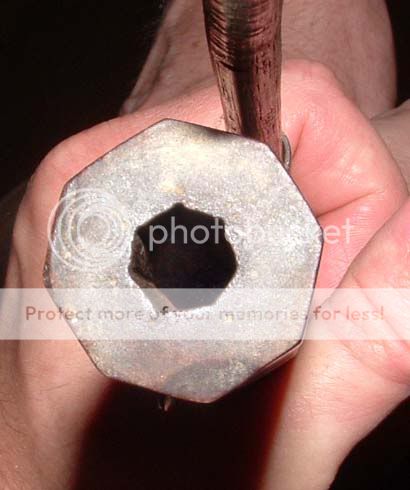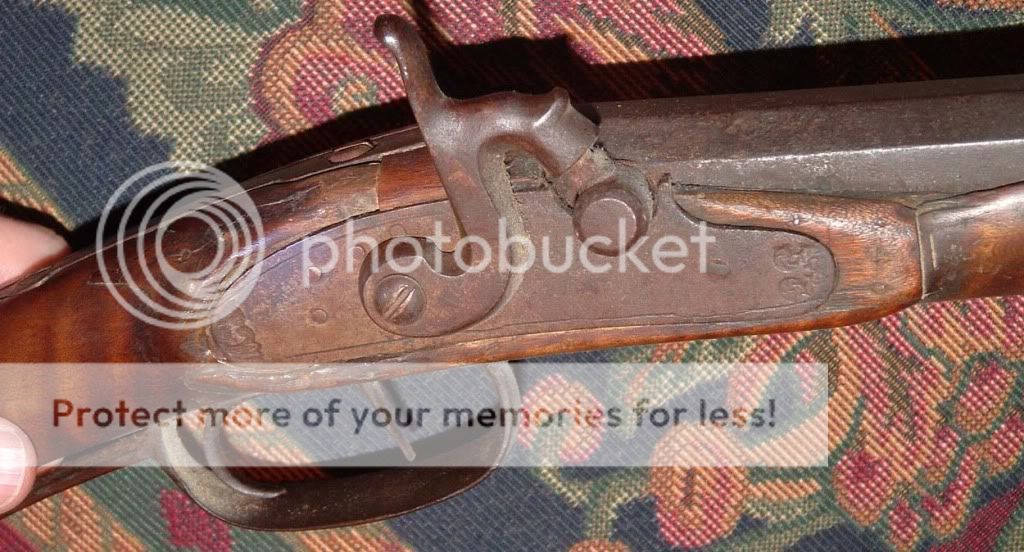Va.Manuf.06 said:
Well Dan, you may be right or you may be wrong. What do you think caused the uneven wear that is seen on so many muzzleloading rifles and, for that matter, fowlers? Repetitive motion with a hickory rod applied in the same place so many times may indeed not be the cause, but it is a great coincidence that the worn section on so many muzzles is in the place where the rod rubs the muzzle when ramming a ball or cleaning the barrel. Why do so many shooters insist on using muzzle protectors when loading and especially cleaning? And that is with modern steel barrels that are harder than the "soft" iron barrels on 19th Century and earlier guns. As you say, you may be right, but.....
Signed,
A Demon of Stupidity
:redface: :v
Get a piece of iron and rub it with a piece of 3/8 hickory rod. See what the effect is with the pressure likely to occur in loading or wiping. Without actual testing thinking its rod wear from use is supposition. Would the rod wear out first?
The Winchester lever actions must be cleaned from the muzzle too but they don't show this and they had pretty soft barrels before smokeless and virtually no crown. They used jointed rods too. Nor do I recall seeing this in the Trapdoor Springfield which also must be cleaned from the muzzle. But they may not have been shot all that much.
I understand this theory pretty well since I make cleaning rods for BPCRs.
I had always thought this was the case until I started to think about it then I began to wonder just how much wear was done in actual use. I have lapped a few barrels but no iron ones.
It takes a lot of work to wear down iron without abrasives.
A friend lapped a original barrel (one at least) and spent a lot of time getting a few thousandths *with* abrasives. He thinks the rod wear thing is a little hard to swallow.
I wonder if some had rods carried in the bore. This was apparently done in the west to some extent to provide a spare loading/wiping rod. Maybe its rod wear but not from loading and wiping.
Wear they hauled in wagons with a spare rod in the bore? Wagons are very hard on firearms and a great deal of "saddle wear" is actually wagon wear. This from a guy who spent quite a few miles hauling people, freight, hay, diesel fuel and guns on horse drawn wagons. Not to mention horse back with guns to a considerable extent.
There are a lot of questions.
Were rifles "freshed" fairly often due to rod wear or due to erosion at the breech as more likely from the powder gas temperature side or from corrosion? Or all three?
If the rifle was freshed they would have cleaned the muzzle at that time and the process would have had to start over.
Did funneling at the muzzle reduce this phenomenon? Did it simply transfer the wear to the choke below the funneling?
How do they get the angle on the rod to get this kind of wear at the muzzle? Once it the bore any distance the rod pretty well aligns with the bore.
Crooked rod? Could be.
Then there are the other parts exposed to rod wear.
Why are the rod pipes not worn through?
Dan




















